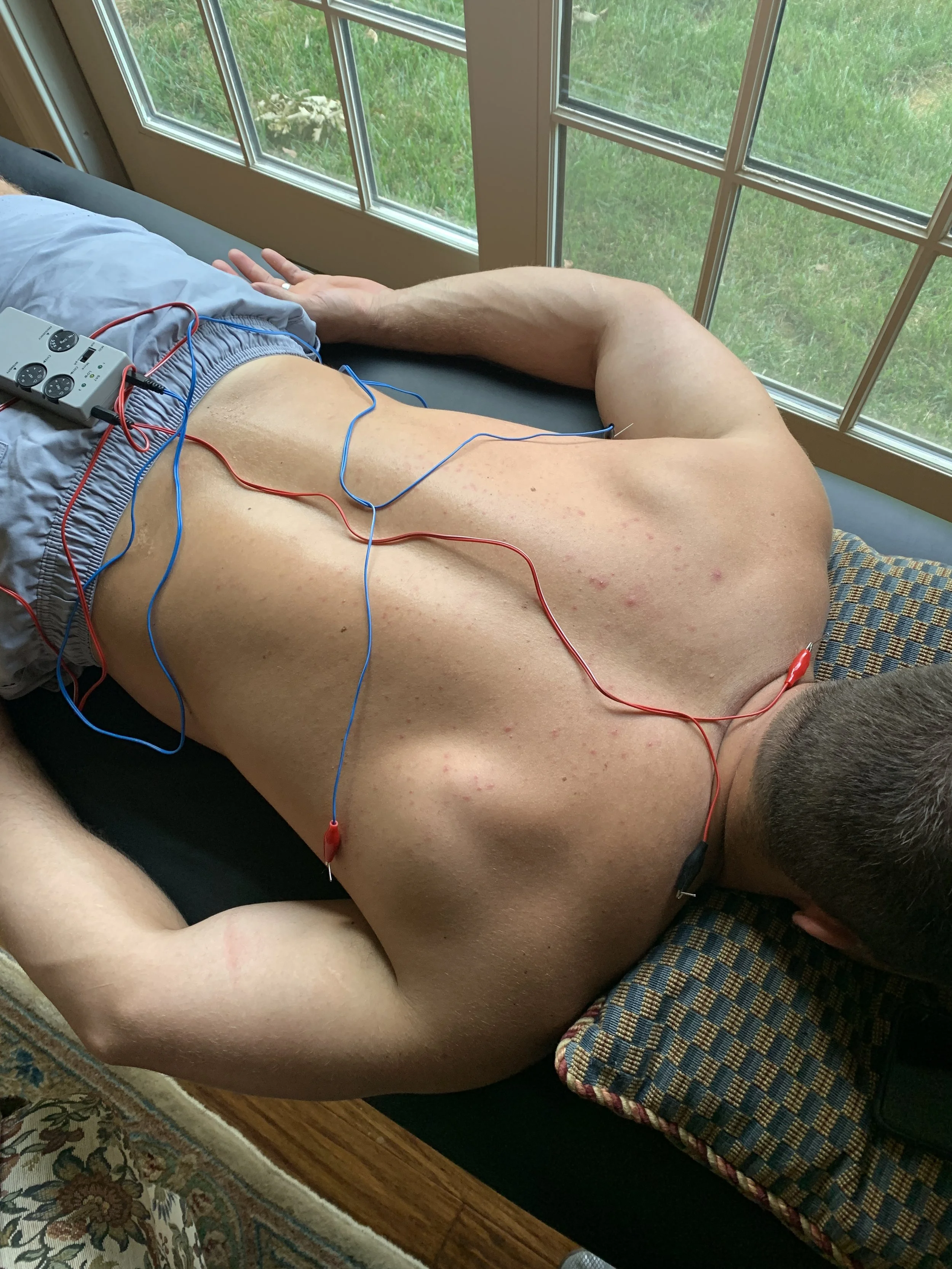Dry Needling: The What, How, and Why
What is it?
Dry needling is a technique used by physical therapists to decrease pain, increase blood flow, and stimulate the nervous system when used as a part of a comprehensive treatment plan. It is the use of a solid filiform needle to directly stimulate myofascial trigger points. The needle is inserted into a trigger point thought to be causing a pain response in the body to illicit a local muscle “twitch”. The needle can be combined with electrical stimulation to create a muscle “pump”.
How does it work?
Let’s get a little nerdy! The needle stimulates the muscle, specifically the muscle spindle afferent fibers (the ones going from the muscle to the spine). The afferent single from the muscle enters the spinal cord which prompts an efferent (from the spine to the muscle) response. The efferent response impacts all fibers of the muscle. Meanwhile, a second interneuron signal is going to the cortex of the brain. Together, these signals are affecting muscle tone, recruitment, local body awareness, and power, while also helping to modulate pain and improve general body awareness and movement patterns.
Why would this be beneficial?
Dry needling has many benefits. It is perhaps most well known and researched for its ability to decrease the perception of pain and sensitivity. Similarly, it improves muscle range of motion, decreases joint stiffness, and increases muscle recruitment.
More recently, dry needling with electrical stimulation has been used successfully to help with muscle recovery after competition, grueling workouts (ex: Murph), or on designated recovery days in programming. The rhythmic muscle contractions create a skeletal muscle “pump”, which improves mean arterial pressure, circulation, and tissue oxygenation and reduces edema, blood pooling, and blood lactate levels.
Needling for recovery should be used within a 24-48 hour window post heavy exertion, and should be a long duration of 15-25 minutes. Muscles that respond best to this approach are large muscle groups like the quadriceps, hamstrings, lats, and traps.
Is this right for me?
Reach out to your physical therapist to discuss further questions. Together, you can determine if this treatment is right for you. Do you have a competition coming up or a high volume workout? You can also discuss the best time to schedule a recovery dry needling session.


